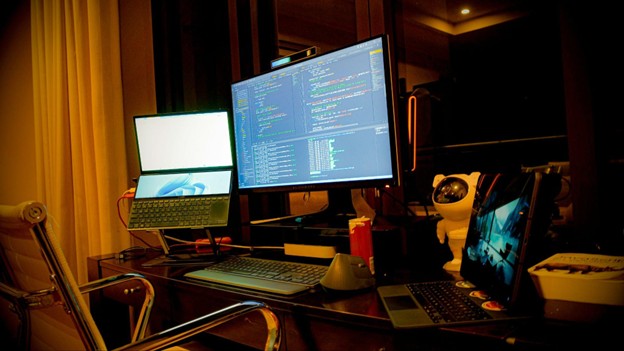Clean code is key to good software. Most programmers agree that the easiest way to save time, reduce bugs, and deliver lasting value is to write code that other people can read. Whether working alone or on a large team, clean code shapes the final product.
It leads to better software outcomes, more confident developers, and teams that work well together. By writing clean code, developers avoid the mess that brings projects to a halt. Instead, they create something others can trust and improve. Junior Software Developer Joshua Bliss explores the many reasons clean code matters.
What Clean Code Means for Developers
At its core, clean code is code that reads like a fluid, simple language. Developers understand what it does and why it exists. The goal is to remove guesswork. Clean code shows intent, logic, and structure in every line.
The value of clean code starts with readability. If someone can read code like a story, they can understand and fix it without confusion.
“When code is easy to read, it is also easier to test, review, and improve,” says Joshua Bliss. “Each logical step shows up in the open. There is no need to guess or hunt for hidden rules.”
Simple code often works best. Decisions made for clarity help explain what the code expects and why choices were made. When developers avoid fancy shortcuts, they keep trouble away. The simpler the code, the fewer places for bugs to hide. A routine with no comments and long methods could stall progress for days. By rewriting with short, single-purpose functions and plain names, the team will save time on every update.
A few rules help keep things simple. Short functions with clear names explain themselves. Each section should do one thing and do it well. Avoiding deep nesting lets people track logic easily. When developers write like they expect someone else to review their work (because someone always will), they create fewer issues and a friendlier codebase.
Consistency pulls a codebase together. When each part of a system looks and feels the same, teams move faster. Files follow the same pattern. Functions appear where expected. Names match what they do. This removes surprise and lowers the risk of missing something.
Structured code works like a well-organized library. Each function sits in the right place. Files contain only what they need to. This order helps people move through a system with confidence. Changes in one place do not break something far away. Developers who use regular patterns see their teams get along better.
New hires pick up projects with less training. Bugs drop because people know where to look. In one case, a team working on a travel booking system switched from ad-hoc folders to a well-defined structure. As a result, onboarding time shrank, and everyone spent less time chasing errors hidden by poor organization.
How Clean Code Improves Productivity and Quality
Clean code pays off in both the short and long term. Developers spot and fix bugs before they become a problem for customers. Clear, simple code supports new features and changes without fear. Teams that share clean code habits spend less energy on fixing old mistakes.
Notes Bliss, “Clean code builds trust in the product. When software works and can be updated with ease, developers take pride in their work.”
Deadlines become less stressful. Teams manage new requests without worrying about breaking what already works. Customers notice the difference, too, with fewer issues and more reliable features.
Dirty code breeds bugs. Confusion leads to mistakes. When developers write code in a hurry, skip comments, or use tricky shortcuts, trouble follows. Clean code does the opposite. It makes it easy to spot the problem before it grows.
Imagine a scenario where a team builds a login feature for an app. With clear, well-named functions, another developer can see where data gets checked. If a bug slips through, the team can track it down fast. The time spent reading and understanding new code drops by half or more. Testing gets easier because the code behaves as expected.
Teams that write clean code handle support calls and bug reports with less stress. They diagnose and fix problems quickly, sometimes before anyone outside notices. If a customer finds an issue, the team can respond with a confident, fast fix. All this saves time and keeps expenses lower in the long run.
Clean code is an investment that pays off over the life of a project. Teams avoid large-scale rewrites that disrupt workflow. As the system grows, new features slip into place without causing trouble elsewhere.
“Codebases maintained with care hold up as projects age. Developers feel more comfortable adding new team members or switching roles,” says Bliss.
Clean code means less time reading, more time building. Early mistakes are cheaper to fix when caught in simple, readable code. Projects that value clean code often last longer and stay healthier. They dodge the trap of “technical debt,” the mess that builds up when teams rush or skip best practices.
Instead, clean habits keep each contributor focused on the right path. Managers report lower turnover, better morale, and smoother handoffs between teams. In real projects, these habits prove themselves.
After rewriting the most troublesome parts with clear naming, short methods, and strict file structure, outage counts dropped by half. The team now spends more time adding features and less time putting out fires. The system’s life has been extended by several years, saving millions.
Clean code matters for both developers and the organizations they support. It creates software that is easier to build, easier to change, and less likely to fail. Projects built with clean code see fewer bugs, faster updates, and happier teams. Simple, consistent, and readable code becomes the single best investment a developer can make.
Organizations that encourage clean code reap the rewards: healthier systems, faster fixes, and satisfied customers. Developers find more meaning and less stress in their work. By making clean code a daily habit, any team can build better products and enjoy smoother projects from start to finish.
The next time someone writes a new feature or fixes an old bug, they should remember that clean code saves time now while setting up every future success. Clean code is for programmers as well as everyone who depends on software that works the way it should—every team, company, and customer benefits when code speaks clearly.































